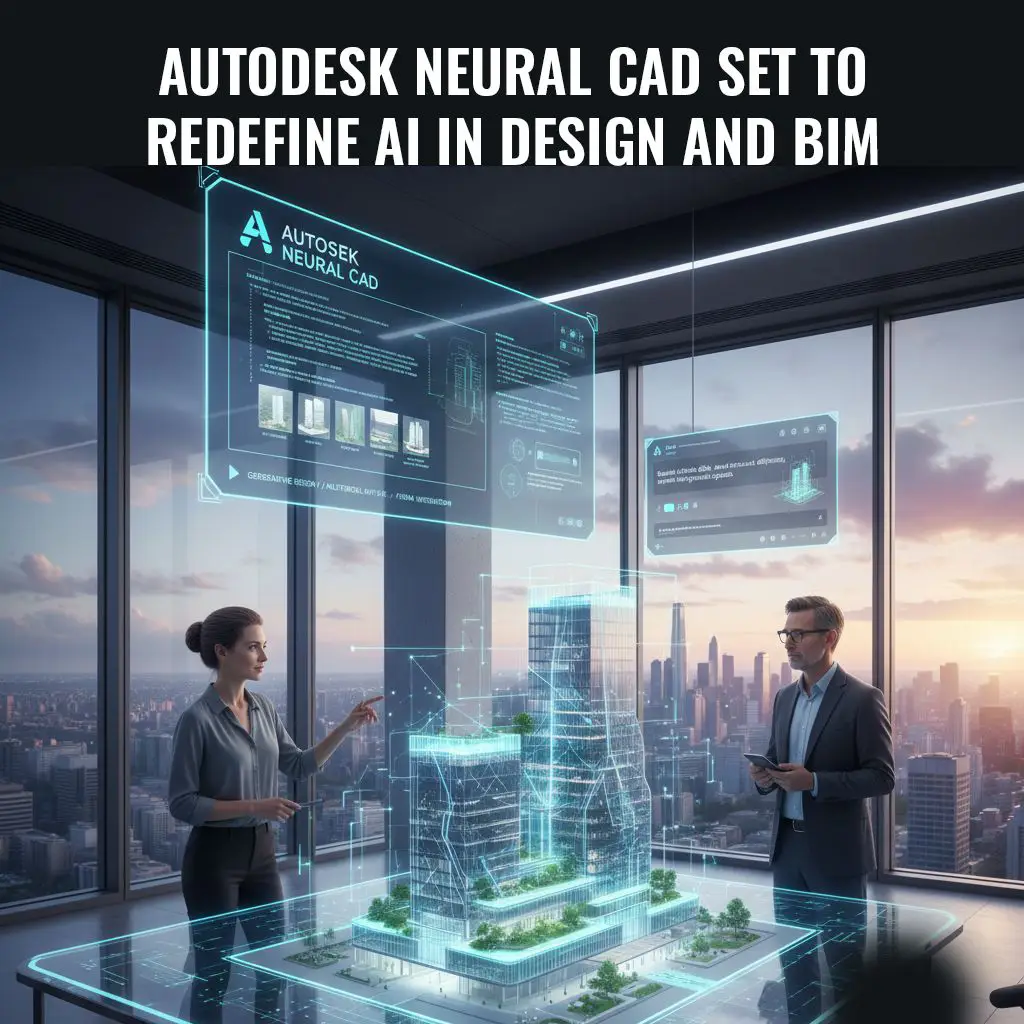Autodesk has unveiled its latest breakthrough in artificial intelligence with the introduction of Neural CAD, a foundation model designed specifically for the architecture, engineering, and construction industry. Announced at Autodesk University 2025, this innovation promises to revolutionize how professionals design, model, and deliver projects.
A New Era of Generative Design
Unlike traditional AI tools, Neural CAD has been trained on industry-specific design and engineering data, enabling it to understand geometry, systems, and architectural logic at a deeper level. The system can generate high-fidelity CAD geometry and BIM layouts directly from inputs such as text, sketches, or parameters, making it a powerful assistant for architects and engineers.
Autodesk is embedding this capability across platforms like Forma and Fusion, giving users access to intelligent design generation that responds intuitively to their creative intent.
Key Features and Capabilities
- Multimodal Inputs: Users can guide designs using sketches, images, voice commands, or text prompts, enabling a more natural design workflow.
- Forma Integration: Neural CAD supports building design at BIM levels of detail, with automated layouts and connectivity to Revit through the "Forma Connected Client."
- Automation Potential: Autodesk envisions Neural CAD automating up to 80–90% of routine design tasks, freeing professionals to focus on creative and strategic decision-making.
- Data Management: The platform also aligns with Autodesk's move to rebrand and restructure its cloud solutions, integrating Forma Data Management for better collaboration.
Why It Matters
The introduction of Neural CAD signals a major shift in how AI supports the AEC industry. Instead of simply assisting with repetitive tasks, it now has the potential to co-create designs, accelerate workflows, and adapt to firm-specific standards. This innovation could significantly reduce project delivery times while improving accuracy and efficiency.
Challenges Ahead
As with any new technology, adoption will depend on trust and usability. Professionals will expect the AI to respect building codes, structural requirements, and regulatory standards. Transparency in how designs are generated will be crucial for widespread acceptance.
Conclusion
Neural CAD marks a defining moment in Autodesk's journey toward AI-driven design. By combining advanced generative capabilities with BIM integration, it has the potential to reshape how the industry approaches design, collaboration, and project delivery. For AEC professionals, this could be the beginning of a new era of intelligent, adaptive design tools.








